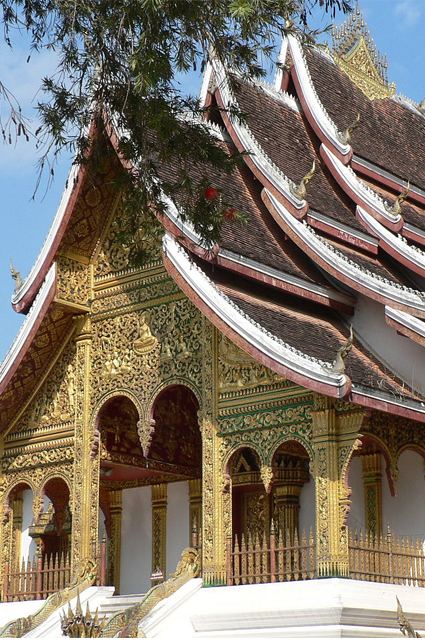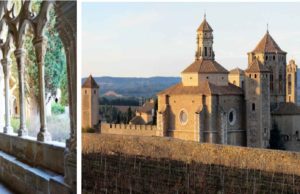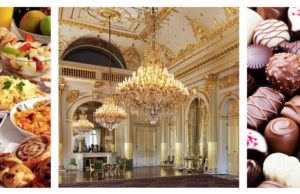
WoT's Hot
The Lao portion of the Thailand-Laos trip had been just wonderful. I had crossed the Mekong River to enter Laos at the Huay Xai border crossing, opposite Chiang Khong in Northern Thailand.
I was tempted to explore the generally tourist-free North Laos region, but the strong pull of Luang Prabang won. So, after just a day in Hunag Xai – a wonderful leg massage, and a great simple rice-pork-vegetable meal were the highlights – I took an overnight bus to Luang Prabang.
Reaching Luang Prabang very early in the morning, I was quite amazed to find almost the whole town in the streets – in all their finery and bearing gifts of fruit, flowers and more. “Such a welcome for Me. But I never told anyone that I was coming today,” I mused. But my ego was deflated when the cabbie told me that it was a Buddhist religious festival! So what1 I still had a wonderful week in Luang Prabang and very reluctantly left for Phonsavan, to visit the famous Plain of Jars.
Phonsavan was a small town – one could walk through the town in just about an hour – with a nice market and friendly people. My small hotel was neat, clean and affordable. But what took me a little time to absorb was that most of the ‘decor’ was bombs, weapons and other old military hardware. Taking a walk later, I found that many premises – both public and private – were similarly ‘decorated’ with rusty bombs and weapons.
 The mystery of the bombs and weapons was solved after a chat with a Knowledgeable One. I was told that during the ‘Secret War’ in Laos, which ended in a Communist victory in 1975, more bombs were dropped on Laos by the United States of America than all the bombing in the Second World War! The Plain of Jars near Phosavan was a favorite target. The result of the conflict was that there were MILLIONS of unexploded bombs in Laos. No wonder people used old – thankfully made-safe – bombs and weapons as favored decorative objects.
The mystery of the bombs and weapons was solved after a chat with a Knowledgeable One. I was told that during the ‘Secret War’ in Laos, which ended in a Communist victory in 1975, more bombs were dropped on Laos by the United States of America than all the bombing in the Second World War! The Plain of Jars near Phosavan was a favorite target. The result of the conflict was that there were MILLIONS of unexploded bombs in Laos. No wonder people used old – thankfully made-safe – bombs and weapons as favored decorative objects.
A very convenient form of transportation in many countries of South Asia – if you are up to it – is to ride pillion on a hired motor cycle. It is relatively inexpensive and you have a ‘free’ guide who often becomes a friend and makes your visit more comfortable. So, the next day, I found myself a friendly motor cyclist and was zipping away to the Plain of Jars – about a half-hour away from the town center.
It is called the ‘Plain of Jars’, but is more a number of sites in a rolling, hilly countryside with lush rice fields. But the Jars? The Plain of Jars is an ancient mystery. There are thousands of stone jars, upto 3-meters high and smaller, spread over the countryside at a number of sites. How old are these jars? They are 500 years old? 2,000 years old? Maybe. Who made them? What are they made of? What were they meant for? No one knows.
Yes there are a number of speculative theories. They were made by a local hero to store a kind of rice wine to celebrate a military victory which liberated the people from a cruel overlord, in the sixth century. Are the jars hewn from stone? Or, are they made from a kind of ‘cement’ made with buffalo skin, sugar cane and sand? Your guess is as good as mine. But what is generally accepted by the experts that these are between 500 years to 2,000 years old. The smaller jars have been taken away by people years ago. Still, there are around 2,500 jars left, scattered over many sites.
I went to the main site, Site No. 1. What was a counterpoint to the jars – and the bombs – was the sight of blooming yellow-orange marigold fields welcoming you. I had no choice, but to stand transfixed and enjoy the marigolds. What brought me down to earth were the prominent notices demanding that due to unexploded bombs, all movement MUST be on clearly designated and demarcated paths. If you strayed, it was at your own peril!
I stuck to the demarcated paths and had a wonderful day, enjoying one of the still-unsolved mysteries of our times. The mystery of The Plain of Jars.
The Lao portion of the Thailand-Laos trip had been just wonderful. I had crossed the Mekong River to enter Laos at the Huay Xai border crossing, opposite Chiang Khong in Northern Thailand.
I was tempted to explore the generally tourist-free North Laos region, but the strong pull o
What to read next
Featured articles

Welcome Festive Season in Glam, Latin Quarters Launches new #PujoBling Collection with Monami Ghosh
by WOT













































